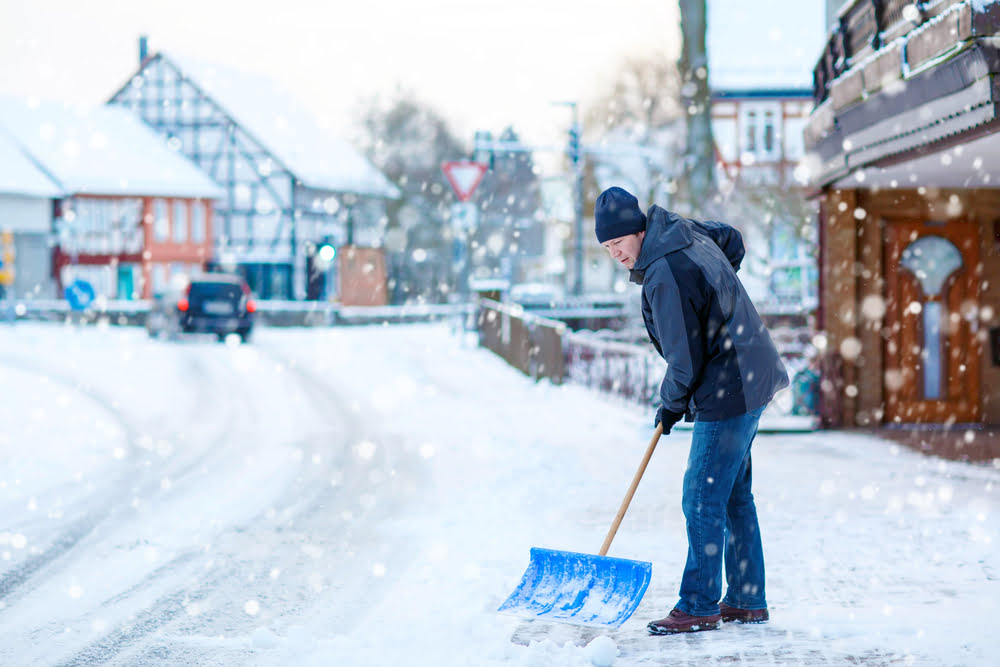Shovelling snow is uncomfortable at best—and at worst, it poses a serious risk to your health. The physical exertion caused by lifting, pushing, and throwing snow can damage your back, increase your heart rate, and cause injuries.
Here in Winnipeg, snowfall is inevitable—but shovelling snow isn’t. We’re here to help keep you injury-free this winter. In this article, we’ve answered common questions related to shovelling snow, snow blowers, and more. Read on!
Why Am I So Tired After Shovelling Snow?
Shovelling snow is a serious exercise, giving both your heart and your muscles a workout. Depending on your exercise routine, shovelling snow may be more exercise than any of your regular workout activities!
Being tired after shovelling snow is absolutely normal—it’s extremely physically demanding. People who are at risk of heart attack or other heart conditions from high blood pressure, heart disease, or other conditions should be especially careful. The same holds true for anyone with a respiratory condition. Shovelling can work your cardiovascular system to its limits—take frequent breaks, drink water, and consider alternative snow-clearing methods.
Cold weather can constrict your blood vessels, increasing the risk of heart attacks. Combined with the physical exertion of shovelling and an increased heart rate, the risks can become significant. If you experience any of the following warning signs of a heart attack, stop shovelling and consider calling emergency services:
- Chest pain
- Shortness of breath
- Pain starting in the left shoulder and arm
- Cold sweat
- Jaw pain
- Lower back pain
- Serious fatigue
- Nausea
- Anxiety
Is It Bad To Leave Snow on Your Driveway?
When you wait too long to clear the snow from your driveway, you create serious risks for yourself, your vehicle, and your family. You may not be able to get into or out of the driveway, and ice may form because of the freeze-and-thaw cycle.
The snow can cover this ice, making it invisible to the human eye. Slip-and-fall accidents can occur much more frequently if snow isn’t being cleared regularly.
Living in Winnipeg, it’s basically impossible to even take your garbage to the curb if you’re not removing snow as it falls. You can, however, put the snow shovels away this winter season—there are ways to clear snow from your driveway without needing to put yourself at risk of a heart attack.
Is Using a Snow Blower Better Than Shovelling?
Using a snow blower is a great alternative to shovelling snow as long as you follow a couple of tips. First, you’ll want to start blowing snow fairly quickly after it falls—fluffy snow is easier to remove with a snow blower than deep snow. You may have to remove snow with your snow blower more frequently, but it will actually take less physical effort in the long run.
Don’t want to buy a snow blower? A leaf blower may seem like an economical alternative if you already have one—just be warned that it will only help clear the white stuff in late fall and early winter. Once it starts getting packed and temperatures drop, you’ll need the real deal.
We also recommend keeping a snow shovel handy; you may need to use it on hard-pack snow. You’ll also want ice melt nearby to melt snow and ice—a mix of rock salt and sand will work well. We’ll talk more about the snow removal tools and snow shovel alternatives you can use, below.
Is Using a Snow Blower Bad for Your Heart?
Any physical activity undertaken out in the cold could increase your risk of heart problems, including heart attacks. Unfortunately, that includes using a snow blower. To decrease this risk, we recommend checking the weather forecast and waiting until the warmest part of the day before attempting any snow removal work.
This is Winnipeg we’re talking about, so the high will sometimes be -40℃ with the windchill; when possible, avoid going out when it’s that cold. All of this being said, using a snow blower still presents a much lower risk than grabbing a shovel and clearing snow the old-fashioned way, so if you have to choose between the two, pick the snow blower.
What Is the Best Way To Clean the Snow?
Here’s our recommendation for snow clearing:
- Clear snow more often, tackling it when it falls instead of waiting for it to build up. You’ll be outside more frequently, but the whole process should take less time—and less physical effort.
- Use your snow blower whenever possible to avoid shovelling snow.
- Remove slush and hard-pack snow that your snow blower cannot remove using a shovel and an ice chopper.
- Spread ice melt over the area you’ve cleared to prevent slip-and-fall accidents.
- Consider installing heated mats on stairs and other dangerous surfaces—these act as ice melters and can further prevent slip-and-fall accidents, all while decreasing the amount of physical effort you’ll need to put into caring for your property in the winter.
Buying a snow blower might not be the most inexpensive option, but it can seriously reduce the amount of work you need to put into clearing large amounts of snow.
Conclusion
The best way to keep your driveways and walkways clean—all while keeping yourself safe—is to hire a company for winter property maintenance. Here at Cleanr, we maintain residential and commercial properties year-round. Stay safe this winter; call us today!


